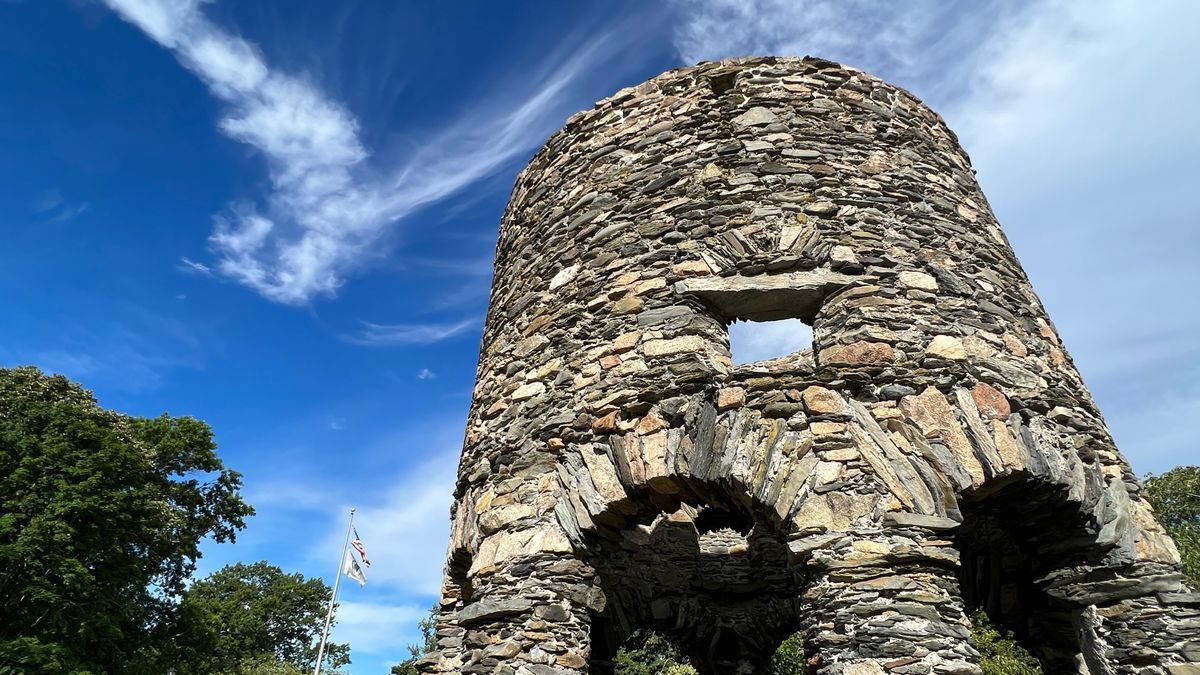Rhode Island’s Stone Tower Origins Revealed

Have you ever wondered about the mysterious stone tower in Rhode Island? This ancient structure, standing tall in Newport, has puzzled historians and locals alike for centuries. Some believe it dates back to the Vikings, while others argue it was built by early settlers. Theories range from it being a windmill to a watchtower. Its true origins remain a topic of debate, sparking curiosity and imagination. Join us as we delve into the history, legends, and facts surrounding this enigmatic tower. Whether you're a history buff or just curious, this tale of the stone tower will captivate your interest.
Rhode Island's Mysterious Stone Tower
Rhode Island's Stone Tower, also known as the Newport Tower, has puzzled historians and archaeologists for centuries. This enigmatic structure, located in Touro Park, Newport, has sparked numerous theories about its origins and purpose. Let's explore some of the most intriguing places connected to the Stone Tower's history.
Viking Connection
Some believe the Newport Tower was built by Norse explorers who reached North America long before Columbus. This theory suggests the tower served as a lookout or religious site.
L'Anse aux Meadows, Newfoundland: This Norse settlement, dating back to around 1000 AD, provides evidence of Viking presence in North America. Could the Newport Tower be another remnant of their exploration?
Greenland: Norse settlers lived in Greenland for centuries. Their architectural styles might offer clues about the Newport Tower's design.
Colonial Theories
Others argue the tower was constructed during the colonial period, possibly by early settlers or even pirates.
Jamestown, Virginia: As one of the first permanent English settlements in America, Jamestown's early structures might share similarities with the Newport Tower.
Salem, Massachusetts: Known for its colonial history, Salem's old buildings could provide insights into the architectural techniques used in the Newport Tower.
Templar Knights Legend
A more romantic theory links the Newport Tower to the Knights Templar, suggesting it was built as a secret refuge or treasure vault.
Rosslyn Chapel, Scotland: This chapel, associated with the Templars, features mysterious carvings and architectural elements that some believe resemble those of the Newport Tower.
Tomar, Portugal: The Convent of Christ in Tomar, a former Templar stronghold, might hold architectural secrets that connect to the Newport Tower.
Native American Influence
Some researchers propose that the tower incorporates elements of Native American construction techniques or was built with their assistance.
Cahokia Mounds, Illinois: This ancient Native American city showcases impressive earthworks and structures that might share design principles with the Newport Tower.
Pueblo Bonito, New Mexico: The intricate stonework of this Ancestral Puebloan site could offer parallels to the construction methods used in the Newport Tower.
Astronomical Alignments
Another fascinating theory suggests the Newport Tower was built as an astronomical observatory, aligning with celestial events.
Stonehenge, England: This prehistoric monument is famous for its astronomical alignments. Could the Newport Tower serve a similar purpose?
Chichen Itza, Mexico: The Mayan observatory at this site demonstrates advanced knowledge of astronomy. Perhaps the Newport Tower was designed with similar intentions.
Conclusion
The origins of Rhode Island's Stone Tower remain shrouded in mystery. Whether built by Vikings, colonists, Templars, Native Americans, or as an astronomical observatory, each theory adds a layer of intrigue to this enigmatic structure.
The Mystery of Rhode Island's Stone Tower
Rhode Island's Stone Tower has puzzled many for years. Some thought it was built by Vikings, others believed it was a colonial windmill. Recent studies show it was likely constructed in the 17th century by Benedict Arnold, the first governor of Rhode Island. This conclusion is based on architectural analysis and historical records.
Understanding the tower's true origins helps us appreciate Rhode Island's rich history. It also clears up many myths and legends. While the tower may not be as ancient as some hoped, its story is still fascinating. Knowing its real purpose and builder connects us more deeply to the past.
Next time you visit Rhode Island, take a moment to see the Stone Tower. Think about the hands that built it and the history it represents. This piece of history is a reminder of the state's early days and the people who shaped it.

